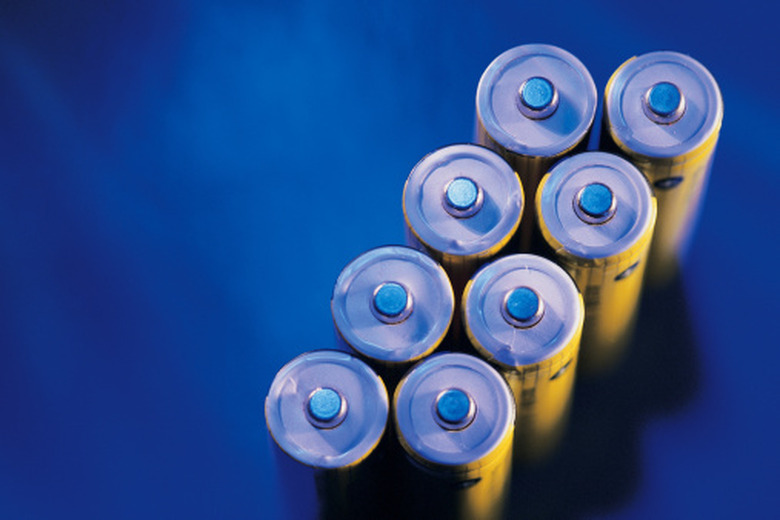Why Not Mix Two Types Of AA Batteries?
Several different types of AA batteries are on the market, including alkaline, NiZN, NiMH, NiCD, lithium and rechargeable. AA batteries are among the most commonly used in American homes for modern electronic devices. Knowing about differences in battery types and about using them safely helps prolong the life of the batteries and your electronic equipment.
Alkaline
Alkaline
Alkaline batteries are cheap and convenient for people who don't use many AA batteries. If you use AA batteries on a regular basis, rechargeable batteries can save you a great deal of money over time. Rechargeable AA alkaline batteries work well for equipment that is not high-draining as far as power goes. High-draining electronics drain alkaline batteries very quickly.
Lithium and NiMH
Lithium and NiMH
Lithium batteries last up to seven times longer than alkaline batteries and can withstand extreme weather conditions. The disadvantage to AA lithium batteries is that they are not available as rechargeables. Nickel Metal Hydride batteries are environmentally friendly and rechargeable. They do take a bit longer to charge than alkaline batteries, but the charge lasts much longer. This type of AA battery is perfect for people who use an electronic device, such as a camera, only on occasion. A camera that sits for long periods between uses will hold a charge when it contains NiMH batteries.
NiZN and NiCD
NiZN and NiCD
At 1.6 volts, NiZN batteries are great for high-drain devices. This is a newer option in batteries that are environmentally friendly. Nickel cadmium batteries hold-up well in high temperature conditions and for commercial applications, but are not environmentally friendly.
Mixing Battery Types
Mixing Battery Types
Different types of AA batteries are made for different purposes; mixing them reduces performance and may damage your device. Mixing two different types of AA batteries may also cause batteries to leak or rupture. Using different brands or mixing new and old batteries in one device may have the same results. Each type of battery and each brand uses different technology, capacity and voltage. Mixing will often cause batteries to become overheated. Extremely hot batteries may explode, causing damage to your equipment and endangering the user.
Battery Composition
Battery Composition
Some rechargeable batteries use lead plates and sulphuric acid to produce a charge and deliver current. Modern rechargeable batteries contain calcium metal in the lead to lower the production of hydrogen gas during the charging process. Hydrogen gas escapes from damaged and overcharged batteries and is highly flammable.
Cite This Article
MLA
Hawthorne, Kimberly. "Why Not Mix Two Types Of AA Batteries?" sciencing.com, https://www.sciencing.com/not-two-types-aa-batteries-8523093/. 24 April 2017.
APA
Hawthorne, Kimberly. (2017, April 24). Why Not Mix Two Types Of AA Batteries?. sciencing.com. Retrieved from https://www.sciencing.com/not-two-types-aa-batteries-8523093/
Chicago
Hawthorne, Kimberly. Why Not Mix Two Types Of AA Batteries? last modified March 24, 2022. https://www.sciencing.com/not-two-types-aa-batteries-8523093/
